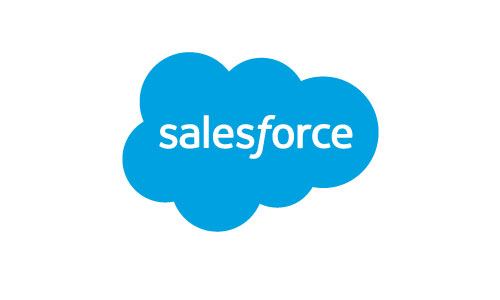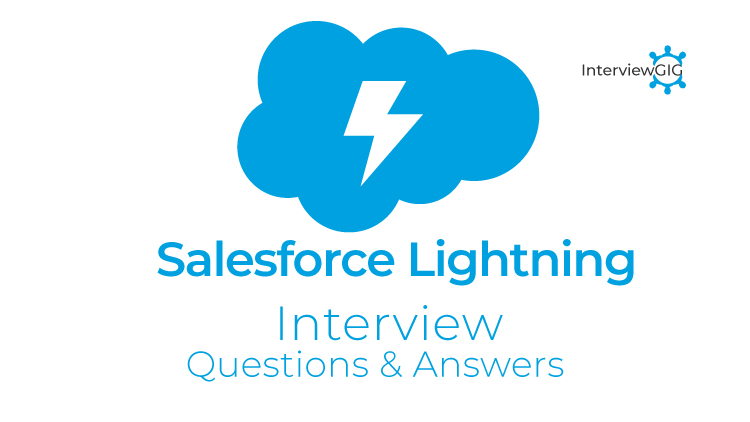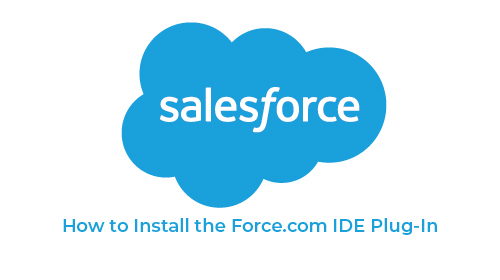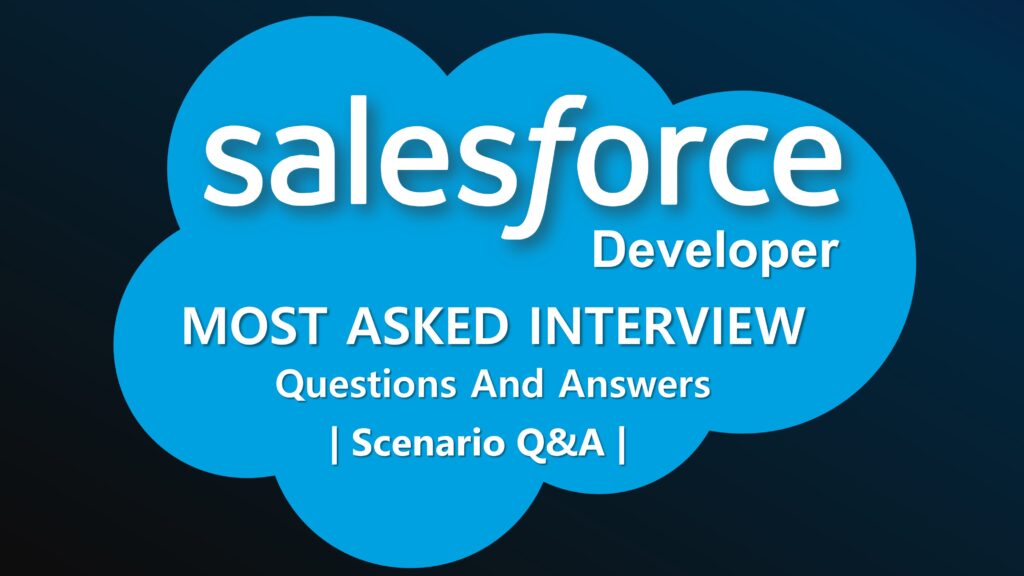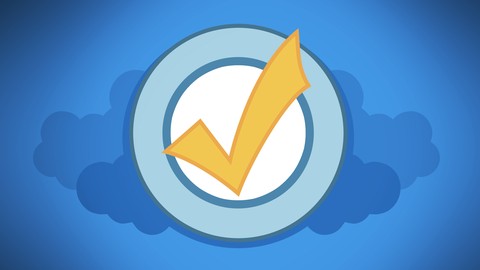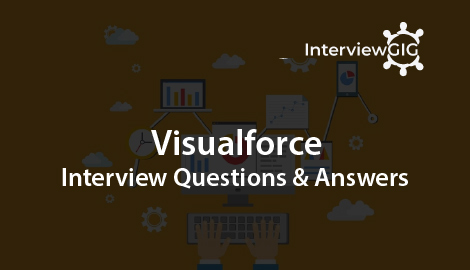What is Cloud Computing?
Cloud computing is an information technology (IT) paradigm that enables ubiquitous access to shared pools of configurable system resources and higher-level services that can be rapidly provisioned with minimal management effort, often over the Internet. Cloud computing relies on sharing of resources to achieve coherence and economy of scale, similar to a utility.
Types of cloud services
Most cloud computing services fall into three broad categories: infrastructure as a service (IaaS), platform as a service (PaaS) and software as a service (Saas). These are sometimes called the cloud computing stack, because they build on top of one another.
SaaS (software as a service):
This type of public cloud computing delivers applications over the internet through the browser. The most popular SaaS applications for business can be found in Google’s G Suite and Microsoft’s Office 365; among enterprise applications, Salesforce leads the pack. But virtually all enterprise applications, including ERP suites from Oracle and SAP, have adopted the SaaS model. Typically, SaaS applications offer extensive configuration options as well as development environments that enable customers to code their own modifications and additions.
IaaS (infrastructure as a service):
At a basic level, IaaS public cloud providers offer storage and compute services on a pay-per-use basis. But the full array of services offered by all major public cloud providers is staggering: highly scalable databases, virtual private networks, big data analytics, developer tools, machine learning, application monitoring, and so on. Amazon Web Services was the first IaaS provider and remains the leader, followed by Microsoft Azure, Google Cloud Platform, and IBM Cloud.
PaaS (platform as a service):
PaaS provides sets of services and workflows that specifically target developers, who can use shared tools, processes, and APIs to accelerate the development, test, and deployment of applications. Salesforce’s Heroku and Force.com are popular public cloud PaaS offerings; Pivotal’s Cloud Foundry and Red Hat’s OpenShift can be deployed on premises or accessed through the major public clouds. For enterprises, PaaS can ensure that developers have ready access to resources, follow certain processes, and use only a specific array of services, while operators maintain the underlying infrastructure. Note that a variety of PaaS tailored for developers of mobile applications generally goes by the name of MBaaS (mobile back end as a service), or sometimes just BaaS (back end as a service).
Other cloud computing service:
FaaS (functions as a service):
FaaS, the cloud instantiation of server less computing, adds another layer of abstraction to PaaS, so that developers are completely insulated from everything in the stack below their code. Instead of futzing with virtual servers, containers, and application runtimes, they upload narrowly functional blocks of code, and set them to be triggered by a certain event (e.g. a form submission or uploaded file). All the major clouds offer FaaS on top of IaaS: AWS Lambda, Azure Functions, Google Cloud Functions, and IBM Open Whisk. A special benefit of FaaS applications is that they consume no IaaS resources until an event occurs, reducing pay-per-use fees.
Private cloud:
The private cloud downsizes the technologies used to run IaaS public clouds into software that can be deployed and operated in a customer’s data center.
Hybrid cloud:
A hybrid cloud is the integration of a private cloud with a public cloud. At its most developed, the hybrid cloud involves creating parallel environments in which applications can move easily between private and public clouds.
Public APIs (application programming interfaces):
Just as SaaS delivers applications to users over the internet, public APIs offer developers application functionality that can be accessed programmatically.
IPaaS (integration platform as a service):
Data integration is a key issue for any sizeable company, but particularly for those that adopt SaaS at scale. IPaaS providers typically offer prebuilt connectors for sharing data among popular SaaS applications and on-premises enterprise applications, though providers may focus more or less on B-to-B and ecommerce integrations, cloud integrations, or traditional SOA-style integrations.
IDaaS (identity as a service):
The most difficult security issue related to cloud computing is the management of user identity and its associated rights and permissions across private data centers and pubic cloud sites. IDaaS providers maintain cloud-based user profiles that authenticate users and enable access to resources or applications based on security policies, user groups, and individual privileges.
Collaboration platforms:
Collaboration solutions such as Slack, Microsoft Teams, and HipChat have become vital messaging platforms that enable groups to communicate and work together effectively. Basically, these solutions are relatively simple SaaS applications that support chat-style messaging along with file sharing and audio or video communication.
Vertical clouds:
Key players in such industries as financial services, healthcare, retail, life sciences, and manufacturing provide PaaS clouds to enable customers to build vertical applications that tap into industry-specific, API-accessible services. Vertical clouds can dramatically reduce the time to market for vertical applications and accelerate domain-specific B-to-B integrations. Most vertical clouds are built with the intent of nurturing partner ecosystems.
What are the benefits of cloud computing?
The cloud’s main appeal is to reduce the time to market of applications that need to scale dynamically. Increasingly, however, developers are drawn to the cloud by the abundance of advanced new services that can be incorporated into applications, from machine learning to internet-of-things connectivity.
Adaptable: Cloud computing allows for adaptable programs and applications, that are customizable, while allowing the owners control over the core code.
Multi-tenancy: Cloud software provides the opportunity to provide personalized applications and portals to a number of customers or tenants.
Reliable: Because it is hosted by a third party, businesses and other users have greater assurance of reliability, and when there are problems, easy access to customer support.
Scalability: With the Internet of Things, it is essential that software functions across every device and integrates with other applications. Cloud applications can provide this.
Secure: Cloud computing can also guarantee a more secure environment, thanks to increased resources for security and centralization of data.
What is Cloud computing security?
Objections to the public cloud generally begin with cloud security, although the major public clouds have proven themselves much less susceptible to attack than the average enterprise data center. Of greater concern is the integration of security policy and identity management between customers and public cloud providers. In addition, government regulation may forbid customers from allowing sensitive data off premises. Other concerns include the risk of outages and the long-term operational costs of public cloud services.
What is CRM?
CRM is a modal used to manage organization interactions like phone calls, emails, social media and meetings with customers and prospects penetrating to sales, marketing and support.
What is SFDC?
SFDC stands for Salesforce.com. Salesforce started as Software as a Service (SaaS) CRM company. Salesforce now provides various software solutions and a platform for users and developers to develop and distribute custom software. Salesforce.com is based on multi-tenant architecture. This means that multiple customers share common technology and all run on the latest release. You don’t have to worry about the application or infrastructure upgrades – they happen automatically. This helps your organization focus on innovation rather than managing technology.
What is the difference between Force.com and Salesforce.com?
Force.com is Platform-as-a-Service (PaaS), while Salesforce.com is Software-as-a-Service (SaaS).
Why SFDC?
It is available on cloud-No need to install any software and no hardware required.
Force.com platform-Reduce development cost.
AppExchange-it is very good market place to sell our custom applications and to buy applications from AppExchange.
More demand CRM
What is a custom object in Salesforce?
Custom objects refer specifically to database tables that store data related to your company in Salesforce.com.
Define Object relationship overview?
In Salesforce you can link the standard and custom object records in a related list. It is done by Object relationship overview. Various types of relationships can be created in order to connect the specific business cases with specific customers. It is possible to create custom relationship on an object and define various relationship types.
How many relationships are present in Salesforce?
The two important relationships in Salesforce include:
Lookup relationship.
Master detail relationship
What is a Self-Relationship?
A Self-Relationship is a lookup relationship to the same object. It is this premise that allows users to take the object “Merchandise” and create relationships with other objects.
What can cause data loss in Salesforce?
Data loss in Salesforce can be caused by a number of reasons, including:
Changing from text-area to e-mail, phone, URL, and text
Changing to auto-number except from text
Changing data and date-time
Migrating to percent, number, and currency from other data types
Changing from multi-select picklist, checkbox, auto number to other types
Altering to multi-select picklist from any type except picklist.
Explain the order of execution in Salesforce?
- System Validation Rule
- Before Triggers
- Custom Validation rules
- After Triggers
- Assignment rules
- Auto-Response rules
- Workflow Rules
- Before and after triggers are executed again if workflow rules updates or inserts any field
- Escalation rules
- Formula fields
- Sharing Rules
- Post commit logic
What is a Trigger in Salesforce?
A Trigger is just a code that is executed before or after a record is inserted or updated.
What is Trigger.new?
Triger.new is a command which returns the list of records that have been added recently to the sObject’s. To be more precise, those records will be returned which are yet to be saved to the database. Note that this sObject list is only available in insert and update triggers, and the records can only be modified in before triggers.
But just for your information, Trigger. Old returns a list of the old versions of the sObject records. Note that this sObject list is only available in update and delete triggers.
What Is Field Dependency?
According to the field selection on one field filter the pick list values on other field.
What is the difference between Trigger and Workflow?
Workflow is an automated process that fires an action based upon evaluation criteria and rule criteria. As described above, Trigger is the code that is executed on or after the record is updated or inserted.
What is the difference between Trigger. New, Trigger. Old, Trigger.NewMap and Trigger.OldMap?
Trigger. New: It returns the list of new records which are updated or inserted on objects
Trigger. Old: It returns the list of old records which are updated or deleted on and from objects.
Trigger.NewMap: It returns the Map of IDs of new records. Available only for Update and Insert.
Trigger.OldMap: It returns the Map of IDs of old records. Available only for Update and Delete.
What is Sandbox and Explain different types of sandboxes?
Sandboxes are the environment where we develop and test our code before implementing it into the production. There are four types of Sandboxes.
Developer Sandbox:
- It can copy only the Metadata from production
- Data storage is limited to 200 MB
- Refresh interval is 1 day.
Developer Pro Sandbox:
- It can also copy only the metadata from production
- Data storage is limited to 1 GB.
- Refresh interval is 1 day.
Partial Copy Sandbox:
- It can copy copy both data and metadata from production.
- Data storage is limited to 5 GB and can copy maximum of 10000 records from a single object.
- Refresh interval is 5 days.
Full Copy Sandbox:
- It is similar to production and everything from production can be copied.
- No limit on data storage.
- Refresh interval is 29 days.
List the various object relations in Salesforce?
- One to many
- Many to many
- Master detail
What is Wrapper class?
A Wrapper class is a class whose instances are collection of other objects. It is used to display different objects on a Visual Force page in same table.
What is the sharing rule?
The sharing rules are applied when a user wishes to allow access to other users.
What is Static Resources?
Using Static Resources, we can upload images, zip files, jar files, java script and CSS files that can be referred in a visual force page. The maximum size of Static Resources for an organization is 250mB.
What are the various types of Reports available in Salesforce?
Tabular report: In this the grand total is displayed in a table format.
Matrix report: An in-depth report where in the there is both row –based and column-based grouping.
Summary report: A report in which the grouping is on the column basis.
Joined report: A joining of two or more reports into one
What is SOSL, SOQL and DML in salesforce?
SOQL: Salesforce Object Query Language. It is used to query data from objects. It is similar to SQL but here tables are objects and columns are the object fields. Records are retrieved
using SELECT keyword.
SOSL: Salesforce Object Search Language. It is similar to SOQL but it returns list of list of objects because it works on multiple objects. Records are retrieved using FIND keyword.
DML: Data Manipulation Language. This is used to manage records in salesforce. Keywords used are UPDATE, DELETE, INSERT and UPSERT, MERGE, UNDELETE.
What is the difference between SOQL and SOSL?
SOQL is Salesforce Object Query Language and SOSL is Salesforce Object Search Language. If you are sensing that Salesforce is a culture unto itself, you are correct!
What is a Governor Limit in Salesforce?
Salesforce Governor Limits are the run time limits that are apply in order to have some performance to the database since it runs on multi tenancy environment.
What are governor limits in salesforce.com?
Governor limits are run-time limits which is enforced at the time of Apex runtime why Because Apex runs in a shared, multitenant environment the Apex runtime engine strictly enforces a number of limits to ensure that code does not monopolize shared resources.
Types of limits that Apex enforces are:
- Memory
- Database resources
- Number of script statements to avoid infinite loops
- Number of records being processed.
Name three Governor Limits?
There’s like a thousand of them, here are some Apex limits:
Description Synchronous Limit
Total number of records retrieved by SOQL queries 50,000
Total number of records retrieved by Database.getQueryLocator 10,000
Total number of SOSL queries issued 20
Total number of records retrieved by a single SOSL query 2,000
Total number of DML statements issued2 150
Total number of records processed as a result of DML statements, Approval. Process, ordatabase.emptyRecycleBin 10,000
What is Apex?
Apex is a strongly typed, object-oriented programming language that allows developers to execute flow and transaction control statements on the Force.com platform server in conjunction with calls to the Force.comAPI. Using syntax that looks like Java and acts like database stored procedures, Apex enables developers to add business logic to most system events, including button clicks, related record updates, and Visualforce pages. Apex code can be initiated by Web service requests and from triggers on objects.
What is an Apex transaction?
An Apex transaction represents a set of operations that are executed as a single unit. The operations here include the DML operations which are responsible for querying records. All the DML operations in a transaction either complete successfully, or if an error occurs even in saving a single record, then the entire transaction is rolled back.
What is Test Class and why do we need it?
A Test class is an apex class that tests your logic written in either apex class or trigger programmatically. A test class actually ensures that your code is working fine as expected.
What are the recommended ways to refactor in Apex?
I use the second method. After refactoring, I select the ‘src’ folder, use File Search/Replace and all the changes are made and saved to the server in one go.
What are the different types of collections in Apex? What are maps in Apex?
Collections are the type of variables which can be used to store multiple number of records (data).It is useful because Governor Limits restrict the number of records you can retrieve per transaction. Hence, collections can be used to store multiple records in a single variable defined as type collection and by retrieving data in the form of collections, Governor Limits will be in check. Collections are similar to how arrays work.
There are 3 collection types in Salesforce:
Maps are used to store data in the form of key-value pairs, where each unique key maps to a single value.
Syntax: Map<String, String> country_city = new Map<String, String> ();
What is common between Java and Apex?
A second question that will definitely be asked during interviews is the common points between Apex and Java. You first have to mention that both of them have classes, have common OOP features and have inheritance as well polymorphism. They also have the same expression and variables and are also capable of looping syntax. They have the same block and statement syntax too. The same object and same array is also a common point. They are all compiled, typed strongly and transactional too.
Which fields are automatically indexed in Salesforce?
Only the following fields are automatically indexed in Salesforce:
Primary keys (Id, Name and Owner fields).
Foreign keys (lookup or master-detail relationship fields).
Audit dates (such as SystemModStamp).
Custom fields marked as an External ID or a unique field
What is difference insert () and database .insert ()?
Using insert method, we can insert the records but if any error occurs in any record system will throw an error insertion fail and none of the records are inserted. If we want to execute partially success of bulk insert operation we will use database. insert.
What is TAB in Salesforce?
Tab is a user interface component to user creates to display custom object data.
What is Visualforce in Force.com?
The Visualforce can be defined as the user interface for the Force.com platform. It is a component-based framework that can include over 100 built-in components. It includes a tag-based markup language and each Visualforce tag corresponds to a page or field. The Visualforce framework works on the standard MVC paradigm. It is possible to have a tight integration with the database and also deploy auto-generated controllers for database objects. Developers can use Apex codes to write own controllers. It is also possible to access AJAX components or create your own components.
What are class constructors?
Class constructors also use a very special method that can be used to create any such objects out of a class definition. The constructors will never have any explicit types of return. Constructors also have the same name as classes do. They are default, have no arguments and are also constructors in case there are no explicit constructors. Constructors can also be an over load which means you could have several constructors that have unique parameters, different kinds of signatures and argument list. They are also called before all the methods inside their class.
What is Audit Trail?
Audit Trail is a function that helps track all the changes performed by different administrators to the Organization in the past 6 months. It covers details such as
- Date of changes made
- Username that made the changes
- Details of the changes made
What is the difference between Salesforce object query language and Salesforce object language search?
The difference between Salesforce object query language and Salesforce object search language is highly necessary. Salesforce object query language has one object that can be searched for at one time whereas there are many objects that could be searched for at a time. Second SOQL will have queries in all kinds of fields whereas query can only be used in emails, phone and texts. Third, SOQL will be used for all classes and triggers whereas Salesforce object search language could be used for classes but not triggers.
What is the difference between Data Loader and Import Wizard?
Data Loader:
- It can load 5 million records.
- All standard and custom objects are supported.
- Schedule regular data imports.
- It can both Export and Import data.
- We can delete data using data loader
- Can be operated either using Use Interface or Command Line.
Import Wizard:
- It is an internal tool.
- It can only import data.
- It can import upto 50 thousand records.
- Supports all custom objects and few standard objects ( Contacts, Leads, Accounts, Solution and Campaign)
- Cannot delete records using Import Wizard.
What is WhoId and WhatId in activities?
WhoID refers to people. Typically: contacts or leads. Example: LeadID, ContactID.
WhatID refers to objects. Example: Account ID, Opportunity ID.
What is a bucket field in reports?
A bucket field lets you group related records together by ranges and segments, without the use of complex formulas and custom fields. Bucketing can thus be used to group, filter, or arrange report data. When you create a bucket field, you need to define multiple categories (buckets) that are used to group report values.
What is “Data Skew” in Salesforce?
“Data skew” is a condition which you will encounter when working for a big client where there are over 10,000 records. When one single user owns that many records we call that condition ‘ownership data skew’. When such users perform updates, performance issues will be encountered because of “data skew”. This happens when a single user/ members of a single role own most of the records for a particular object.
What are the implications of implementing Database.Stateful?
Daniel Ballinger: No, batches do not ever run simultaneously. You are correct, however, that serialization is the culprit here.
Grigriforce: what’s your batch size? If you’re doing a million records, and your batch size is 1, then you will serialize/deserialize your state 1M times. Even with a small serialized object, that’s gonna hurt.
Does ‘default value’ do anything if the object is created through Apex?
New feature coming in the next release:
Foo__c f = Foo__c.sobjecttype.newSObject (
RecordTypeId, // can be null
True); // loadDefaultValues
What is the difference between public and global class in Apex?
Global class is accessible across the Salesforce instance irrespective of namespaces.
Whereas, public classes are accessible only in the corresponding namespaces
What is difference between Action support and Action function?
Action function: Invoke the controller method from javascript using AJAX and we can use action function from different places on visual force page.
Action support: Invoke the controller method using AJAX when even occurs on page like onMouseOver, onClick, etc.… and we can use action support for particular single apex component.
How many active assignment rules can you have in a lead/ case?
Only one rule can be active at a time.
What is the difference between a Role and Profile in Salesforce?
A profile will ultimately control access to which records a user has in a Salesforce org. No user can work on the Salesforce org without being assigned a profile. The Profile is therefore mandatory for every user.
Role however is not mandatory for every user. The primary function of the Role/ Role hierarchy is that it allows higher level users in hierarchy get access to records owned by lower level users in the hierarchy. An example of that is Sales Managers getting access to records owned by Sales Reps while their peers do not get access to it.
What are getter methods and setter methods?
Get (getter) method is used to pass values from the controller to the VF page.
Whereas, the set (setter) method is used to set the value back to controller variable.
What is the maximum size of the PDF generated on visualforce attribute renderAs?
What are the different types of email templates that can be created in Salesforce?
The different types of Email templates are listed in the below table:-
Text All users can create or change this template
HTML with letterhead Only Administrators and users having “Edit HTML Templates” permissions can create this template based on a letterhead.
Custom HTML Administrators and users having “Edit HTML Templates” permissions can create this template without the need of a letterhead
Visualforce Only administrators and developers can create this template. Advanced functionalities like merging data from multiple records is available only in this template
What is App in Salesforce?
An app is a group of tabs that work as a unit to provide functionality. Users can switch between apps using the Force.com app drop-down menu at the top-right corner of every page. You can customize existing apps to match the way you work, or build new apps by grouping standard and custom tabs.
Navigation to create app in Salesforce: Setup ->Build ->Create->App-> Click on new and create your application according to your requirements.
How to call javascript using Static Resource in Visualforce page?
Add java script file in Static Resource setup -> develop -> Static Resources -> click on ‘New’ -> Name: filename and add file from local desktop and save.
We can use that file as follows in Visualforce page
What is minimum test coverage required for trigger to deploy?
In Salesforce, if you want to deploy your code to production, then you must make sure that at least 75% of your Apex code is covered by unit tests. And all these tests must complete successfully
What is a sObject type?
A sObject is any object that can be stored in the Force.com platform database. Apex allows
the use of generic sObject abstract type to represent any object.
For example, Vehicle is a generic type and Car, Motor Bike all are concrete types of Vehicle.
In SFDC, sObject is generic and Account, Opportunity, CustomObject__c are its concrete type.
Difference between DEV401 and DEV 501
The DEV 401 (Certified Force.com Developer) is foundation development certification for the Salesforce1 Platform and covers the groundwork in terms of creating objects, fields, tabs, apps etc. along with workflow and permissions. Building customized applications, analytical functions.
The DEV 501 (Certified Force.com Advanced Developer) covers apex programming and visual force programming along with more detailed information around limits. Apex scripts, Developer console, deploying MVC architecture.
Many/most functional consultants carry the DEV 401 as it covers the day to day work for the majority of Salesforce consultants and is very similar to the Certified Administrator certification.
